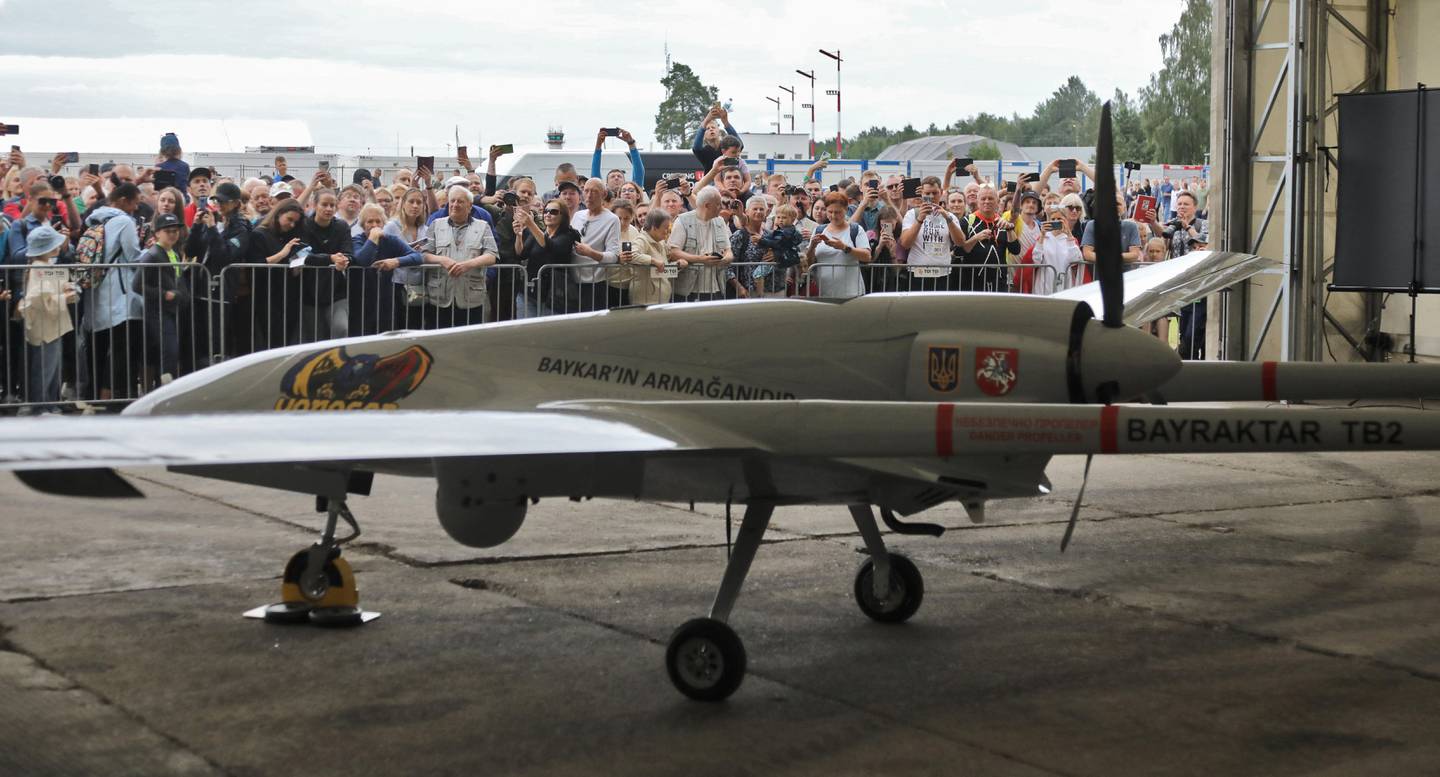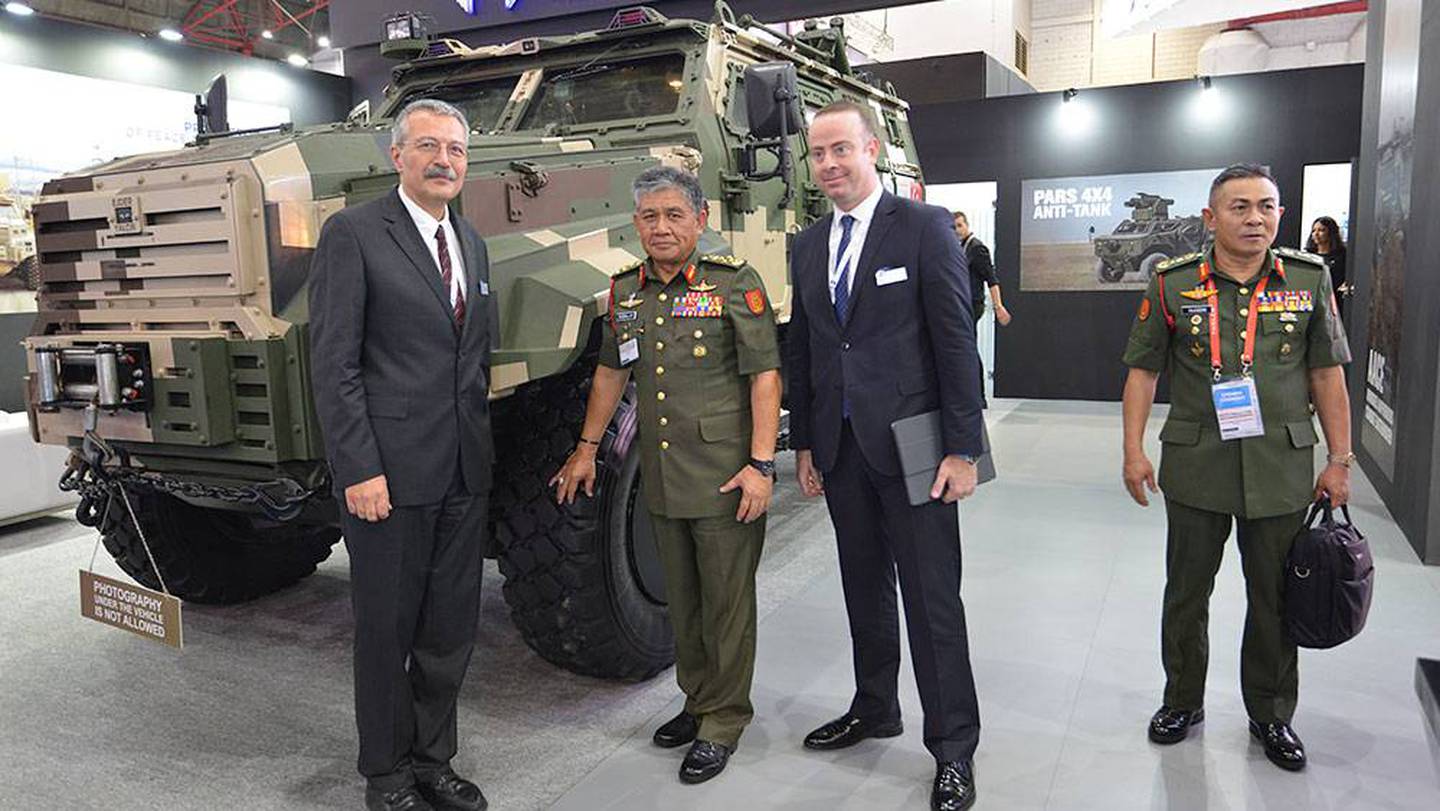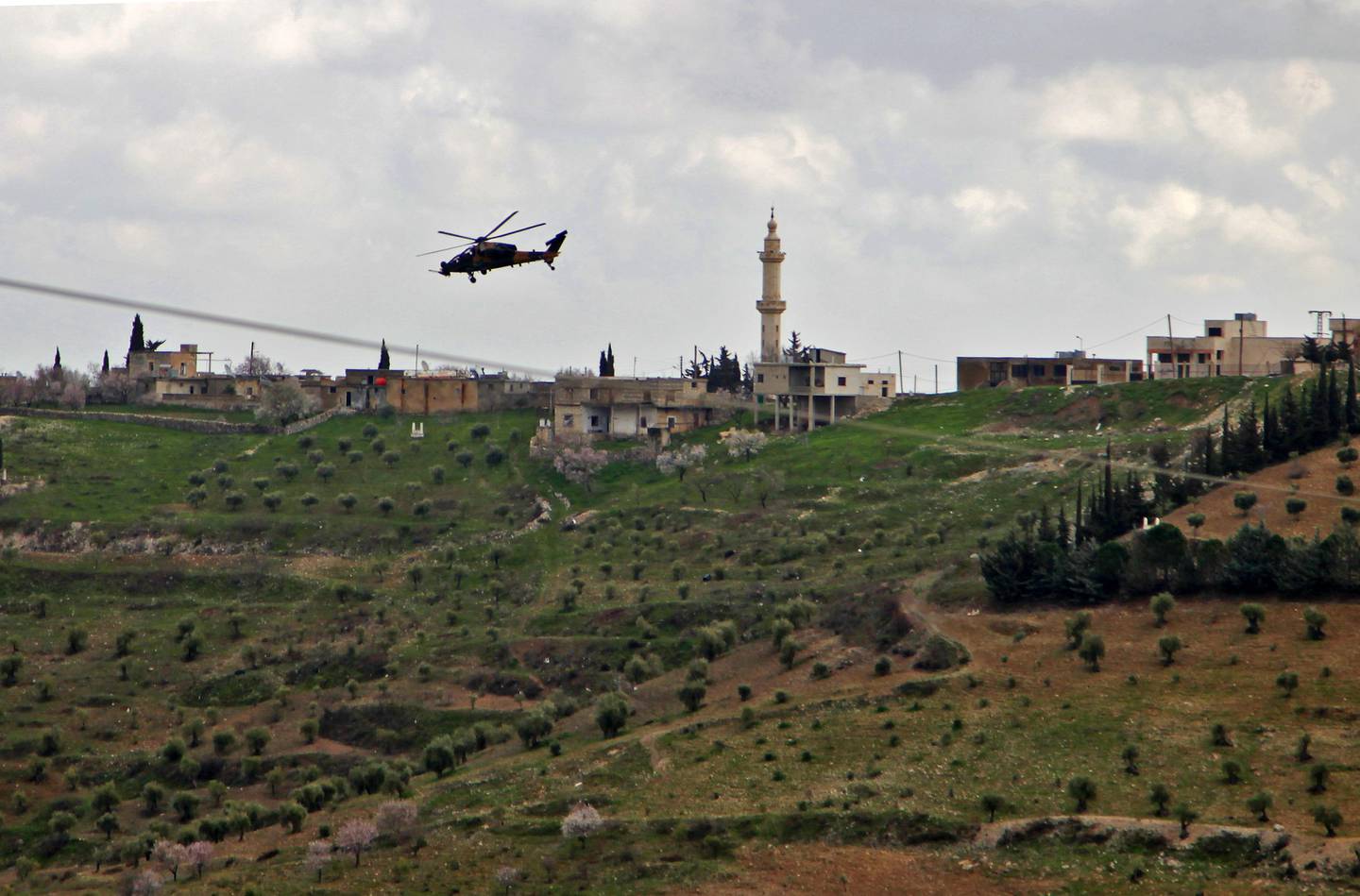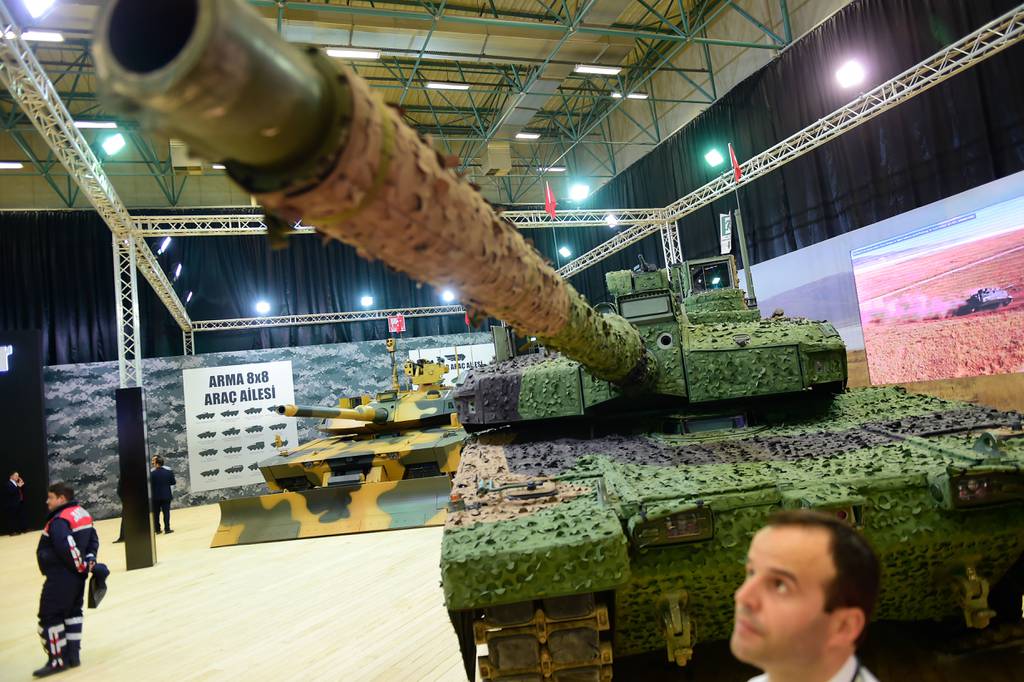Según un informe especializado de mayo del 2022, las ventas de equipamiento de Defensa y Aeroespacial de Turquía, han aumentado 10 veces en las últimas dos décadas y las exportaciones en ese área han crecido un 1200% en el mismo período. El crecimiento excepcional de la comercialización de sus productos, algunos de los cuales son desarrollos totalmente locales como el UCAS Bayraktar TB-2, han alcanzado renombre mundial por su eficiencia en el campo de batalla y despertado interés de compradores a nivel global. Ejemplos como este, además de la producción de Helicópteros de ataque y vehículos blindados a rueda, son el resultado de un esfuerzo sostenido de I&D tanto del sistema industrial estatal como privado, liderado y sostenido por una política de estado sólida, que tiene como objetivo fortalecer la Base Industrial para la Defensa de ese país, posicionándose como líder del mercado en determinados “nichos” comerciales de interés.
ANKARA, Turkey — Turkey’s defense and aerospace sales have increased tenfold over the last two decades, with the sector’s export business growing by nearly 1,200%, according to data released May 3 by one of the country’s industry umbrella organizations.
Sales in 2002 equated to about $1 billion, and annual exports stood around $248 million. But in 2021, Turkey’s defense and aerospace sector sales reached $10.1 billion, and exports totaled $3.2 billion, exceeding $2.6 billion in imports, the Defence Industry Manufacturers Association reported.
And Turkish companies won new orders worth $8.5 billion that same year, during which the industry employed 75,000 people and spent $1.6 billion on research and development, the association found.
“These numbers speak for themselves. This is a spectacular growth story,” said Ozgur Eksi, a defense analyst in Ankara. “Over the past two decades, Turkish engineering has taken several big steps with indigenous solutions, which later paved the way for lucrative export contracts.”
Furthermore, Turkey’s defense and aerospace exports in the first half of 2022 reached a record high of almost $2 billion, up 48% from the same period in 2021, official statistics revealed July 19. According to the Turkish Exporters’ Assembly, exports may come close to or exceed the $4 billion mark by the end of 2022, an annual all-time high.
Drone deals
“The rise in exports, which came after two years of decline during the pandemic in 2020 and 2021, should be attributed primarily to aerospace, and homemade drones in particular,” Eksi told Defense News. “These numbers tell us that the Turkish industry’s dependence on local sales is diminishing, and exports are helping Turkish companies to become self-sufficient.”
Ukraine, for instance, has become a regular buyer of Bayraktar TB2 drones, produced by Turkish firm Baykar. Deliveries of the drones began before Russia invaded Ukraine on Feb. 24, but has continued since. In May, Kyiv received 12 TB2s and related operating systems, then ordered another 24.
Overall, Turkey has supplied 96 TB2 drones globally, including to Poland, the first European customer. Two government officials working on defense industry exports told Defense News potential buyers include the United Kingdom, Hungary, Latvia, Lithuania, Saudi Arabia, Bosnia-Herzegovina, Serbia, Slovakia, Uruguay and Albania.

In 2019, the drone maker teamed up with Ukrainian state-owned arms export organization Ukrspecexport to work on drone technology in the country. Through the relationship, Baykar hoped to procure from Ukraine turboprop engines from the MS-500V-S family that generate 950-1,050 brake horsepower as well as turboprop engines from the AI-450C series that provide 450-630 brake horsepower for the Akinci drone.
In 2021, Baykar secured land in Ukraine to build a testing, training and maintenance center as well as a factory for TB2 drone systems. But Russia’s invasion of Ukraine on Feb. 24 has stalled those plans.
Although the company would not disclose the exact location for its planned project, citing security reasons, industry sources told Defense News the land is around Kharkiv and Donetsk, which have been the targets of Russian attacks.
“Such co-production plans between Turkey and Ukraine have been indefinitely postponed. Major delays should be expected and, in some cases, these may take years,” depending on how the Russian invasion plays out, Eksi said.
Central Asia is also becoming another marketplace for the TB2. Last year, Kyrgyzstan signed a deal to purchase the armed drone, becoming the first Central Asian country to buy the system, although it’s unclear how many were ordered.
In May 2022, Turkey and Kazakhstan agreed to co-produce Turkish drones the Central Asian country purchased in 2021. The Anka, made by Turkish Aerospace Industries, will be jointly produced at a facility in Kazakhstan, which officials expect to open in late 2022 or early 2023. TAI was ranked 67 in this year’s Top 100 list, along with two other Turkish companies: Aselsan at 49 and Roketsan at 86.
Also in May, reports emerged that Tajikistan, another Central Asian nation, had bought the TB2, with neighboring Kyrgyzstan voicing its alarm amid an arms race between the two countries.
More recently, Turkey’s ambassador to Bangladesh, Osman Turan, said July 25 that the Dhaka government and Baykar have agreed on contractual terms for the sale of the TB2 to the Asian nation. The ambassador did not provide a quantity nor a contract value.
By air, land and sea
While Africa is a new market for Turkish defense firms, defense and aerospace exports to the continent are rising, from $83 million in 2020 to $288 million in 2021. Turkish companies have sold various equipment and armored vehicles to 14 African nations: Burkina Faso, Algeria, Chad, Morocco, Ghana, Kenya, Mali, Mauritania, Niger, Nigeria, Senegal, Somali, Rwanda and Uganda.
“Threats of terror, increasing geopolitical rivalry [and] growing conflict zones have dictated a major increase in defense spending in Africa, offering, among others, export opportunities to Turkish manufacturers,” wrote Mursel Bayram, an associate professor at the Ankara University of Social Sciences.
For its part, Nurol Makina, which makes the Yoruk and Ejder Yalcin four-wheel drive tactical armored vehicles, has sold its products to 18 countries, from Chile to Malaysia and from Senegal to Uzbekistan.
Both vehicles entered the inventory of European Union and NATO member Hungary in September 2019, and the company in March 2022 announced its debut in the European market by opening a location in the country. Nurol’s general manager, Engin Aykol, said the new facility aims to create solutions specifically for the Hungarian Ground Forces.

Also in March, Nurol delivered 40 Gidran tactical wheeled armored vehicles to Hungary, with 100 more to be produced there. Gidran is the name given to Nurol’s Ejder Yalçın mine-resistant, ambush-protected vehicle, which is in use by the Turkish military.
Turkey’s maritime market has also made moves in Ukraine. In November 2020, the two countries signed an industrial cooperation agreement, under which Turkey in 2021 began construction of the first Ada-class corvette for Ukraine, with delivery planned for 2023. A second Ada-class corvette is to be built by Ukraine’s OKEAN shipyard.
However, diplomatic snags are slowing down some of Turkey’s programs and bringing export deals to a halt.
In 2018, Pakistan chose Turkey’s T129 attack helicopter to replace its fleet of AH−1F Cobra gunships that were acquired in the 1980s. Pakistan signed a $1.5 billion contract with TAI for 30 T129 helos; however, the deal has not progressed as T129′s engine is a joint U.S.-U.K. product that requires export licenses before delivery can take place.

The 5-ton T129 is a twin-engine multirole helicopter produced under license from the Italian-British company AgustaWestland and based on the A129 Mangusta. It’s powered by two LHTEC T800-4A turboshaft engines, each of which can produce 1,014 kilowatts of output power.
The T800-4A is an export version of the CTS800 engine. LHTEC, the maker of the engine, is a joint venture between the American firm Honeywell and the British company Rolls-Royce.
U.S. lawmakers quietly froze all major U.S. arms sales to NATO ally Turkey for nearly two years, Defense News reported in August 2020, in order to pressure Ankara to abandon its Russian-built S-400 surface-to-air defense system, but the Turkish government has yet to do so.
Nevertheless, Turkey and the Philippines announced in May 2021 TAI would export six T129 helos to the Asian nation without U.S. restrictions; nearly a year later, in March, the Philippines received the first two aircraft, and the remaining four are scheduled for delivery in 2023.
Last last month, TAI announced new deals to export six T129s to Nigeria. The firm also announced the sale of an unspecified batch of its Hurkus HYEU, an advanced version of the Hurkus basic trainer aircraft, to Chad.
TAI has previously sold two HYEU platforms to Niger and is presently competing in a race to sell 18 of them to the Malaysian military. TAI declined to comment on the contract value for the Nigerian and Chad deals, and it would not provide a quantity for the aircraft deal with Chad.
Southeast Asia has also served as a market for Turkish radar technology. A procurement official with Turkey’s Presidency of Defence Industries said negotiations between the state-controlled defense organization ASFAT and the Philippine government reached a final phase in April for Turkish-made offshore patrol vessels. The source said Turkey anticipates a $600 million contract for the export deal.
Fuente: https://www.defensenews.com


